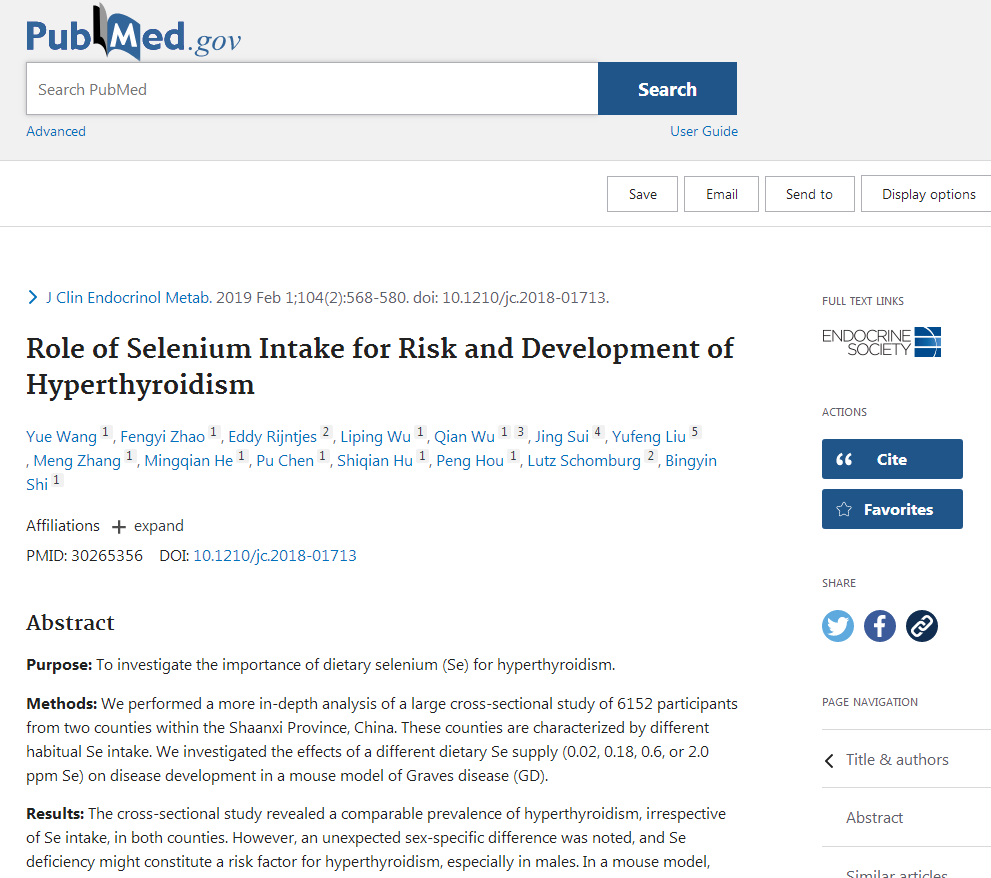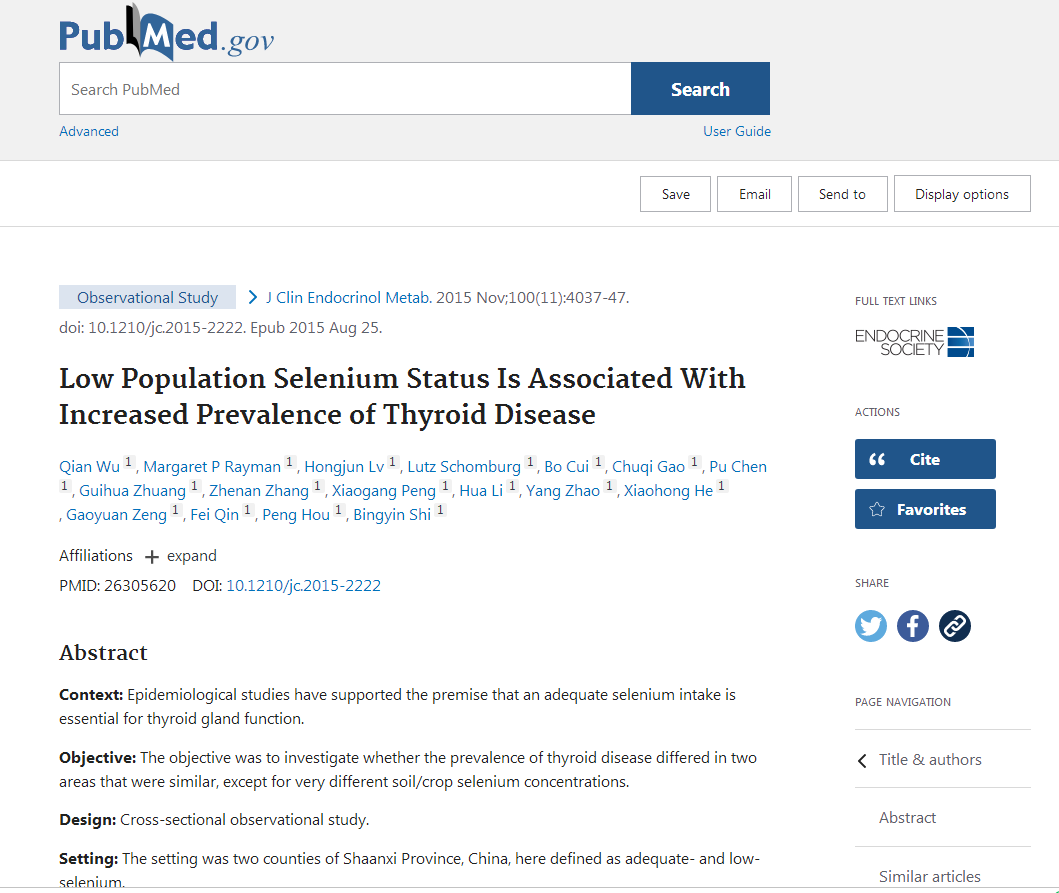On September 1, another research result of the team led by Professor Shi Bingyin in the field of selenium and endocrine diseases was published in the internationally-renowned journalRedox Biology (IF=9.986) as an Article entitled “Selenium deficiency is linearly associated with hypoglycemia in healthy adults”.
This is the first cross-sectional study compared serum selenium and glucose levels in over 6,000 subjects to explore the relationship between selenium and glucose metabolism, which confirmed the intimate association between hypoglycemia and selenium deficiency and filled the gap in the etiology of hypoglycemia. In addition, it proposed the U-shaped model between them for the first time in the world, which unraveled the mechanism underlying glucose homeostasis by an adequate selenium supply.
This study was jointly completed by the team led by Professor Shi Bingyin from Department of Endocrinology of the First Affiliated Hospital of Xi 'an Jiaotong University (XJTU), the team led by Professor Lutz Schomburg from Charité-Universitätsmediz in Berlin in Germany and the team pioneered by Professor Wu Qian from Xi'an Jiaotong University Health Science Center. The First Affiliated Hospital of XJTU is the affiliation of the first author. Wang Yue from Department of Endocrinology of our hospital and Eddy Rijntjes from Charité-Universitätsmediz in Berlin are the co-first authors of this article. Professor Shi Bingyin and Professor Lutz Schomburg are the co-corresponding authors.
The team led by Professor Shi Bingyin has been dedicated to the study of selenium and endocrine diseases for many years. Taking advantage of the natural difference of selenium status between in Ziyang and Ningshan in Ankang, a consecutive, long-term and large-scale epidemiological investigation has been carried out in these two regions for over 10 years. Clinical data from over 6,000 subjects have been obtained through questionnaire, physical examination, thyroid ultrasound examination and serological examination,etc. Consequently, multiple critical questions can be analyzed and explained by these consecutive large-scale investigations.
In 2015 and 2018, relevant research outcomes of the team led by Professor Shi Bingyin have been successively published in The Journal of Clinical Endocrinology & Metallurgy (IF=5.399), which is a top-notched academic journal in the field of endocrine diseases. His team, for the first time, established female mouse models of Graves disease and conducted large-scale cross-sectional study, confirming no significant association between selenium intake and hyperthyroidism in female population, whereas identifying a positive correlation between selenium intake and the prevalence of hyperthyroidism and other thyroid diseases in the male counterparts, including hypothyroidism, subclinical hypothyroidism, autoimmune thyroiditis, goiter and dozens of thyroid diseases in the articles entitled "Low Population Selenium Status Is Associated With Increased Prevalence of Thyroid Disease" and "Role of Selenium Intake for Risk and Development of Hyperthyroidism". These studies add novel evidence and viewpoint for unraveling the pathophysiological mechanism of hyperthyroidism and expand the research direction for the relationship between selenium and thyroid diseases.


Taken together, this is the first large-scale cross-sectional epidemiological study to compare the relationship between hypoglycemia and selenium deficiency, providing a novel direction for the diagnosis and treatment of abnormal glucose metabolism and bringing benefits to patients with abnormal blood glucose caused by selenium deficiency or excess due to the availability of nutritional treatment.
This study was supported by National Key R&D Program of China-Comprehensive Demonstration Research on Prevention and Control of Chronic Diseases in Northwest China and Deutsche Forschungsgemeinschaft.
https://pubmed.ncbi.nlm.nih.gov/26305620/
https://pubmed.ncbi.nlm.nih.gov/30265356/
https://pubmed.ncbi.nlm.nih.gov/32905881/